Smith Machine Bar in an Incline for Pull-Ups: What This Means
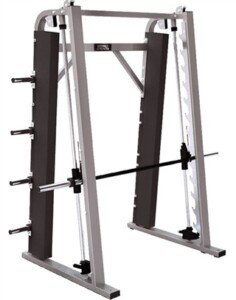
If you have a workout program that suggests “Smith machine bar in an incline” for women unable to do pull-ups, and you don’t know what this means, then here is the explanation.
Pull-ups Using a Smith Machine at “Incline”
When I hear “Smith machine” and “pull-ups” in the same sentence, an image comes to mind:
• Setting the Smith bar high enough so that you can hang on it, legs bent so that feet are off the floor, and do pull-ups—feet never touching.
• For women who can’t do pull-ups but are almost there, it can mean letting your feet contact the floor at all times to subtract some body weight, or having them make contact for some of the time throughout the repetition.
But when we toss “incline” into the picture, only one thing comes to mind: Setting the bar low enough so that your BODY is inclined, at an angle, as you pull up and lower.
In other words, a “Smith machine bar in an incline” is an odd descriptor for an inverted row or “modified pull-up.”
If the OP’s workout plan literally says “Smith machine bar in an incline,” then whomever wrote that must have been half-asleep at the time.
The OP thought that “incline” meant place an inclined bench under the Smith bar, sit in it, then pull up off the bench, then lower back into the bench.
I’d be extremely surprised if the workout plan really does call for this, as this would be a very inefficient way to do pull-ups and get strong enough for real pull-ups.
First off, it would be a hassle just to drag the bench over to the Smith machine every single time for pull-ups.
Now imagine sitting in an inclined bench, Smith bar over you, grabbing the bar and lifting yourself out of the bench. How cumbersome and inefficient can this possibly get?
“Incline” obviously refers to the inclined angle of one’s body during a reverse row or the so-called modified pull-up.
Smith Machine Pull-ups
• The bar can be set at any number of heights, depending on one’s strength and body height.
• The Smith machine makes for a very convenient reverse row apparatus and is often used for this purpose.
• Get under the bar, but make sure the height is high enough to allow full extension of your arms as you hang.
• Your body is straight out in front of you, but because the bar is higher than the floor, your body will be inclined.
• Your heels are on the floor, feet up.
• Keep your body straight and pull up. Your chest should come up under the bar.
• Keep your body as straight as a plank of wood throughout the set.
• If it’s too difficult to pull yourself all the way up, raise the bar.
• Raising the bar will make your body more upright but still “inclined.” But the move will be easier.
• This is the same move that you’ve probably seen many times being done using suspension straps.
To get strong enough for pull-ups, I recommend using the Smith machine bar while your body is 100 percent upright — but many women will need to build up to even this point.
 Lorra Garrick is a former personal trainer certified through the American Council on Exercise. At Bally Total Fitness she trained women and men of all ages for fat loss, muscle building, fitness and improved health.
Lorra Garrick is a former personal trainer certified through the American Council on Exercise. At Bally Total Fitness she trained women and men of all ages for fat loss, muscle building, fitness and improved health.
Should You Worry About Your 5-Year-Old Girl Being Too Tall?

If your tall 5-year-old daughter sees you worrying about her height, she’ll internalize this anxiety & learn to hate her body — and that can attract bullying.
Okay, it’s one thing if you’re concerned from a medical standpoint and are worried about a pituitary tumor because your five year old daughter is closing in on five feet tall.
But if she’s “a head” taller than her classmates, and healthy otherwise according to her pediatrician, you should not worry.
Otherwise, think of what the worry and anxiety will do to her self-image.
“If parents are hyper-focusing on any aspect of their daughter’s appearance and worrying aloud about it, that sends her an unfortunate message: Her appearance is more important than other aspects of who she is, and something about her appearance is not good enough,” says Patricia Celan, MD, a senior psychiatry resident at Dalhousie University in Canada.
“Society does enough of this – let her family show her otherwise.
“Don’t fixate on making comments such as, ‘You’re so tall,’ especially not in a negative or worried tone.”
A comment of “You’re getting so tall” may seem benign if spoken in an enthusiastic tone, but it can be a gateway to comments such as, “I sure hope you don’t get any taller,” or, “If you get any taller you’ll be bigger than all the boys on this block, and we don’t want that.”
Dr. Celan continues, “If your daughter seems to have a passion for sports, for arts or for learning in any particular subject, make sure you’re not diminishing the value of those things by letting her believe her world should revolve around her height.
“Try tailoring comments to be less about appearance and more about her interests and her personality, so she can develop into an emotionally healthy and fulfilled young woman rather than someone who is forever insecure about whether or not her appearance is good enough.”
Proof in the Pudding
There is a tall woman’s site that has a section where women could post their feelings about their height.
I never knew that so many tall women could actually be suicidal over this, but that’s what a striking number of comments say.
And even more of them literally weep over their height and blame it on all the bad things that have ever happened to them such as romantic relationships gone bad and childhood bullying.
They slouch, avoid heeled shoes like the plague and are constantly tortured by self-consciousness.
After reading their posts, you’d think they were cursed with giant brown hairy warts all over their face and fungus growing out of their head.
Instead, many of these women are only 5-11 and even 5-10! I say “only” because many of the posters with a more positive attitude are 6-2 and 6-3!
Parents Worrying About Young Daughter’s Height: Dangerous!
So your five-year-old girl is growing super fast or maybe has always been very tall for her age, towering over her kindergarten classmates and even being taller than older neighborhood children.
Sometimes she’s mistaken for a seven- or eight-year-old. Does this upset you?
Damn, stop it.
Ever see the commercials for St. Jude’s Children’s Research Hospital? Maybe you should pull these up on YouTube and watch them for awhile.
I’m pretty sure that every one of those parents in these commercials would trade their child’s cancer for a very long — and healthy — body.
Imagine learning your very tall five-year-old daughter’s leg pain is from bone cancer and that the leg needs to be amputated.

Bill Branson /ancer.gov
Hmmm, suddenly, her height won’t matter to you so much.
The women on the tall women’s site, I have to believe, had mothers who continually showed languish over their height growing up.
These women, as little girls, internalized this worry and unhappiness over their height and grew up to bear this cross.
It reminds me of an article I wrote for a magazine years ago about what makes a child so fearful of the dentist – even though they’ve never experienced any pain from a dentist.
The dentist I interviewed told me the cause was the parents. “The child sees the parents’ own anxiety over the dentist and they learn to fear the dentist. If Mom is afraid, then I should be afraid.”
It’s the same concept with height: “If Mummy is worried I’m getting so tall, then it must be a really bad thing.”
So the little girl learns – from her own mother (and maybe even Dad) – that being tall is something awful. The foundation has been laid; the trajectory for her growing-up years has been set.
Everywhere she goes she will feel mercilessly self-conscious about her height, and this self-loathing will attract bullies like a light drawing moths.
If your daughter is on course for being a very tall woman, then embrace it. It is just SO COOL when a woman is very tall!

The other day I saw a woman in line at McDonald’s – she must have been close to six feet.
Her husband must have been close to 6-4. He was holding their preschool daughter.
It’s a pretty good bet that the girl’s final height will be well over six feet, and that all through school, she’ll tower over her classmates. Lucky her!
If parents embrace their tall daughter’s height, this will set a very positive, rewarding trajectory. Quit your bellyaching and just be thankful your child is healthy!
Source: tallwomen.org
 Dr. Celan is a post-graduate trainee in psychiatry, working in diagnosing and treating patients with psychiatric conditions. She is passionate about psychotherapy, especially in trauma, anxiety and depression.
Dr. Celan is a post-graduate trainee in psychiatry, working in diagnosing and treating patients with psychiatric conditions. She is passionate about psychotherapy, especially in trauma, anxiety and depression.
 Lorra Garrick has been covering medical, fitness and cybersecurity topics for many years, having written thousands of articles for print magazines and websites, including as a ghostwriter. She’s also a former ACE-certified personal trainer.
Lorra Garrick has been covering medical, fitness and cybersecurity topics for many years, having written thousands of articles for print magazines and websites, including as a ghostwriter. She’s also a former ACE-certified personal trainer.
.
Top image: Shutterstock/luckyraccoon
Guidelines for Jogging after Total Knee Replacement Surgery

Are you now fully recovered from your total knee replacement surgery and are interested in taking up jogging for aerobic exercise?
There is a strong likelihood that you, as a total knee replacement patient, were not a runner or jogger in the few years prior to the surgery.
By the time a TKR is needed, the joint is bone on bone or almost such, and the patient is suffering from considerable pain; even slow walking is very painful.
Perhaps many years ago you were into jogging, and now you want to get back into it.
Or maybe you’ve never been a jogger, much less runner, and are now considering taking up this form of cardio exercise.
However, as a total knee replacement patient, running—and even jogging—is off-limits to you.
Why Total Knee Replacement Patients Should Never Run or Even Jog for Exercise
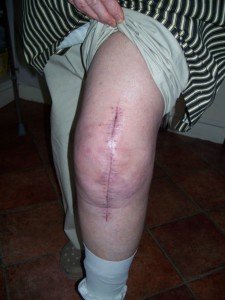
Credit: Dave Haygarth
“I would never recommend that anyone (previous runner or not) who has had a TKR take up running, unless it is to run from someone for your life,” says Barbara Bergin, MD, board certified orthopedic surgeon at and co-founder of Texas Orthopedics, Sports & Rehabilitation Associates.
Dr. Bergin explains, “Many surgeons who do TKR’s don’t like to give patients any doubts regarding their knee replacements, so they often tell patients they can do anything they want to after surgery, like run, play sports and ski.
“If they tell you that you can’t do these things, patients often wonder why they would want to have the surgery if they can’t resume the things they used to do or the things they think they might like to do.
“They will have doubts about the integrity of the operation and the skill of the surgeon. So the surgeon just says ‘yes.’
“As a surgeon who used to do total joint replacements, I can tell you that I always told my patients ‘no.’
“And here’s why. You have only one chance to have one total joint (per joint). They last about 20 years before they loosen and wear out.
“This stat includes all comers, from 45-year-old, morbidly obese patients to 100 lb., 80-year-old ladies.
“If you have your total knee replacement when you’re 60, and it wears out when you’re 80, you are now faced with a revision.
“Revision joint replacement is a salvage operation. It is more complicated. More bone must be removed. You are more likely to have a fracture or an infection. You are more likely to be dissatisfied.
“Your surgeon assumes, if you’re older, that you aren’t going to go out and tear it up, so they say ‘yes.’
“But younger patients are more likely to get more active. This is why they are more likely to wear the total knee replacement out sooner and are more likely to be dissatisfied with the result.”
- The artificial joint includes polyethylene bearings.
- Running would place tremendous stress on these components which could lead to a disastrous failure of the polyethylene material.
Exercises that a TKR Patient Can Do
Dr. Bergin explains, “Take care of your total knee or hip replacement like it was your child. Don’t do high impact exercises. Don’t do squats. Don’t play sports.
“What can you do? Walk, swim, cycle, play golf, travel and just live without pain. That’s the actual reason to do a total knee replacement: to decrease pain.
“It’s not to allow you to do more activities, unless it’s just the activities of normal living.”
Don’t even think about skiing or racquetball, though light tennis is approved by the American Academy of Orthopedic Surgeons.
Yoga is also permitted, but do not sit on your heels and avoid squat-like poses or positions that involve considerable knee bending (e.g., child’s pose). There are plenty of yoga poses that are safe for an artificial knee joint.
“And a word to the wise,” adds Dr. Bergin. “Patients who are overweight often think that they need that knee replacement in order to exercise and lose weight.
“Warning: Studies show that pretty much no one loses weight after having a total joint replacement. And that’s because weight loss occurs in the kitchen and not out on the running track.”
Walk, Don’t Run, with a Total Knee Replacement

Shutterstock/ Dmytro Zinkevych
Proper biomechanics when walking are crucial for those with a TKR. Though walking outdoors is better for the joints than is using a treadmill, the treadmill is often a more convenient option.
Once you are completely recovered from your TKR, you should not hold onto the treadmill, as this will disrupt the body’s natural gait.
Or, to get a bit jargony, it will mess up the kinetic chain. This is the last thing a knee joint – artificial or natural – needs.
Holding on will force your body to assume improper posture while walking. There is no reason for continuously holding onto the treadmill and making the holding-on part of the workout.
Hold on while sipping water or taking a heart rate check, but then walk with your arms swinging naturally, the way the body is supposed to move.
If your knee hurts, this will not be corrected by holding onto the treadmill.
If you feel you’ll lose balance without holding on, then you’re going too fast, even if you think the speed is slow. It can always be slower.
Walking on a treadmill without holding on encourages good posture and proper knee movement because your body is forced to balance and walk correctly—the way nature intended it to.
The total knee replacement patient does not need to go running to get an effective cardiovascular workout.

Dr. Bergin is a general orthopedist, surgically and conservatively treating all manner of bone and joint conditions. She enjoys educating patients so they can emerge stronger than they were before their orthopedic injury or surgery.
 Lorra Garrick has been covering medical, fitness and cybersecurity topics for many years, having written thousands of articles for print magazines and websites, including as a ghostwriter. She’s also a former ACE-certified personal trainer.
Lorra Garrick has been covering medical, fitness and cybersecurity topics for many years, having written thousands of articles for print magazines and websites, including as a ghostwriter. She’s also a former ACE-certified personal trainer.
.
Top image: Shutterstock/MilanMarkovic78
Source: orthoinfo.aaos.org/topic.cfm?topic=a00357
Why Do Some Kids Foil Abduction Attempts and Others Don’t ?

What’s unique about the child who’s able to foil an abduction attempt, vs. ones who never try?
Every once in a blue moon you hear about a child who wildly “fights off” an abductor and escapes, while most other victims obediently do everything they’re told as though paralyzed with fear. (more…)
Weightlifting Exercises that Raise Blood Pressure the Most ?

Lifting weights will raise blood pressure, but there are exercises in particular that will really put your blood pressure through the roof.
Normal blood pressure is under 120/80. It’s not surprising that a very fit person with a clean diet has a resting blood pressure of around 100/60.
Any kind of resistance training will raise your blood pressure. Blood pressure can soar to 345/245 during very heavy lifts.
This was observed in a study (Journal of Hypertension Supplement, 1989).
The highest blood pressure increases during this study were caused by squats. Single-arm curls caused the lowest rises.
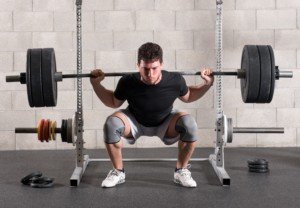
The back squat; raised blood pressure the most. Shutterstock/Photology1971
The report’s abstract does not list all the exercises that were monitored.
This will make one wonder if the deadlift and rack pull were part of this study, because these moves allow you to lift a lot more weight than does the squat.
However, we can definitely conclude that heavy deadlifts and heavy rack pulls will soar blood pressure — based on the premise that the back squat does.
All three exercises involve a barbell and mechanics that allow the body to move a LOT of weight.
Below are the exercises that allow the most amount of weight to be moved.
• Back squat

Shutterstock/MilanMarkovic78
• Front squat

Shutterstock/baranq
• Deadlift

Freepik.com
• Rack pull
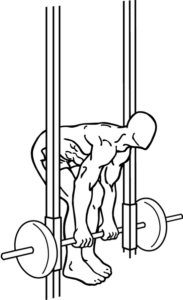
Everkinetic, Creative Commons
• Olympic style lifts (e.g., clean & jerk)

Shutterstock/Microgen
• Bench press and leg press
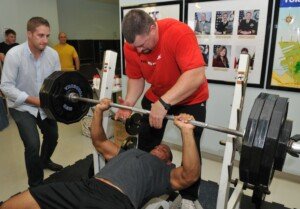
Additional Factors Influence Blood Pressure
• Length of static holds
• Length of the set (e.g., 3 RM vs. 6 RM).
Baseline blood pressure influences how high BP gets when doing any lifting moves.
So if your baseline tends to be 90-something over 55 to 60, then when you deadlift a one RM, it won’t skyrocket as high as it would if your baseline were in the 120/70 range.
Make sure you get that: The BP will jump AS MUCH during a super heavy lift – whether your baseline is very low or average, but the final number won’t be as high if your baseline is very low.
In short, what gets tacked on during the lift is the same, but if it’s getting tacked onto a lower baseline BP, then the final number won’t be as high as it would if your baseline were higher.
Never hold your breath when lifting. Never. “This causes the intracranial, middle ear and chest pressures to go up,” says Dr. Beatty.
For big lifts with mega weight, this can put the athlete at risk for an intracerebral hemorrhage, especially if other risk factors are present such as a pre-existing brain aneurysm (which usually doesn’t cause symptoms and can exist without the person ever knowing).
Exhale on the lift and inhale on the release.
Though blood pressure will spike dramatically during heavy lifts, the long-term effect of weightlifting is a lower baseline BP.
 Lorra Garrick is a former personal trainer certified through the American Council on Exercise. At Bally Total Fitness she trained women and men of all ages for fat loss, muscle building, fitness and improved health.
Lorra Garrick is a former personal trainer certified through the American Council on Exercise. At Bally Total Fitness she trained women and men of all ages for fat loss, muscle building, fitness and improved health.
.
Source: ncbi.nlm.nih.gov/pubmed/2632751
Long Femur and Short Shins in the Leg Press: Disadvantage?
Can people whose femurs are shorter than their shins, regardless of torso length, have a mechanical advantage with the leg press?
Nearly all the attention regarding the long femur problem is directed at the back squat. (more…)
HOW Can a Knee Replacement Lead to a Heart Attack? Mechanisms
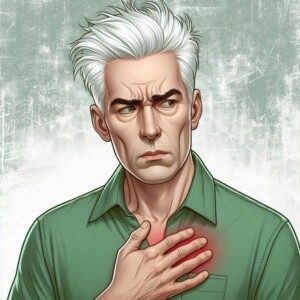
A person can suffer a heart attack only three days after a knee replacement (or other joint replacement) surgery.
Just HOW does this happen? (more…)
Hip Pain Three Months after Hip Replacement: Causes, Solutions
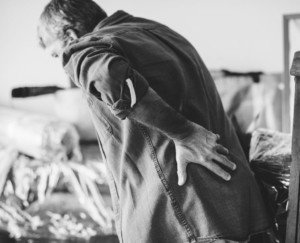
It’s not always normal to still have hip pain three months after a hip replacement. There are loads of possible causes for this pain.
The first possibility: Total hip replacement patients who fail to adhere to their rehab exercises.
If you’re too sedentary in the weeks following hip replacement surgery, there may be pain located about the hip simply due to stiff structures.
Postsurgical depression can sink in and result in being very inactive and spending a lot of time in bed — leading to a stiffened joint and underused soft tissue.
Patients also must ask themselves if the pain they’re feeling is actually coming from the hip or some other nearby area such as the thigh.
Thigh pain may radiate up towards the hip, creating the illusion that the pain is originating from the hip.
“First let me say that there is NEVER a 100% guarantee of 100% pain relief after a hip replacement,” begins Barbara Bergin, MD, board certified orthopedic surgeon at and co-founder of Texas Orthopedics, Sports & Rehabilitation Associates.
“This is a manmade operation, meant to relieve the pain of hip arthritis. Period.
“It is not meant to allow a person to return to sports or some level of activity they had when they were younger.
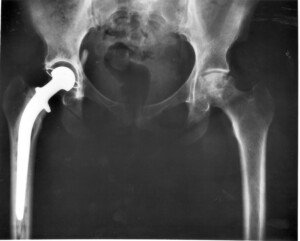
“Basing everything else I say on that premise, hip pain at three months might be completely normal.
“With a few exceptions, it takes the body about 6-9 months to completely recover from most injuries and surgery.
“So, pain at three months is kind of expected, and when patients tell me they have NO PAIN three months after a big operation, I thank the cosmos for sending me a happy, tolerant patient with a high threshold for pain, and reasonable expectations.
“Okay, so now that we have both extremes covered, let me think of what dangerous things might be causing pain at three months.
“Let’s start with bad things, which are not the most common things. Complications from total hip replacements are rare.
Blood Clot
“A blood clot (deep venous thrombophlebitis) could cause pain in the thigh or leg three months after a hip replacement.

Blood clot
“It’s unlikely but not unheard of, and in fact, we often keep patients on baby aspirin for three months after surgery on the lower extremity.
“But by then, patients are usually getting around, which means they’re pumping that venous blood out of their legs, so it’s not sitting around forming clots.”
Infection
“Infection can occur at any time following a joint replacement, from the day after, to years later.
“Patients and doctors are always on the prowl when it comes to sudden changes in pain, especially if accompanied by fever, redness or swelling.
“The surgeon takes extreme precautions and steps to prevent this disastrous outcome, and fortunately…it is rare.”
Dislocation
“Dislocations can also occur at almost any time following a hip replacement, but are less likely to occur as time goes by.
“There will be no question in the patient’s mind that something very bad has occurred, when the hip dislocates.
“Not only is it painful, but they will not be able to move. It can occur as the result of a fall, but it can also occur with some very common movements.
“This will require a visit to the emergency room because of the pain.
“The hip will be put back in place. Surgeons also take many steps to prevent this kind of problem, and it too is rare.
“Now to the less dangerous, although always concerning causes of pain.”
Activity
“Soreness from increased activities occurs as patients get more active, once the surgical pain has died down.
“They’ve returned to the gym, started walking more or might have increasing demands placed on them in physical therapy.”
Seroma
“Minor surgical setbacks can occur in this period of time, like the development of seromas (fluid leaking out of the depths of the wound, and causing swelling and pain).”
Small Fracture
“Occasionally a small fracture could result from the surgery. The surgeon usually knows when this occurs and depending on what type of fracture, they might fix it at the time of the surgery.
“There might be some remote possibility that a tiny fracture could be missed, and this could result in pain later on if it doesn’t heal. Again…rare.”
Loosened Hardware
“There is an unlikely chance that something could come loose after the surgery. Again, very rare, but there would be some pain associated with it.”
Activities that Can Loosen Hip Replacements (especially cement) and Cause Pain
- Impact (jogging, tennis, horseback)
- Heavy weightlifting
- Jumping from heights
- Gaining excess weight
Not following the rules for the first eight weeks following hip replacement surgery could result in pain that lingers.
Don’t bend the operated hip beyond 80 degrees.
Don’t raise your knee higher than hip.
Avoid sitting on low seats.
Avoid leaning forward when sitting.
In rare cases hip pain can result from leg length disparity or nerve damage.
If you’re still having pain three months out, or you have new-onset pain three months or so out from the hip replacement, don’t put off making an appointment with your surgeon.
It’s rare that a pain after surgery would not have an explanation.
Additional Causes of Hip Pain that Can Persist or Develop Three Months After Surgery
(Source: Clinical Cases in Mineral and Bone Metabolism, Ferrata et al, 2011)
• Bone loss
• Abnormal formation of bone
• Bone remodeling in response to physical stress
• Inflammation of synovial fluid
• Allergy to metal wear debris
• Prosthesis impingement
• Iliopsoas tendinitis
• Abductor muscle damage

Dr. Bergin is a general orthopedist, surgically and conservatively treating all manner of bone and joint conditions. She enjoys educating patients so they can emerge stronger than they were before their orthopedic injury or surgery.
 Lorra Garrick has been covering medical, fitness and cybersecurity topics for many years, having written thousands of articles for print magazines and websites, including as a ghostwriter. She’s also a former ACE-certified personal trainer.
Lorra Garrick has been covering medical, fitness and cybersecurity topics for many years, having written thousands of articles for print magazines and websites, including as a ghostwriter. She’s also a former ACE-certified personal trainer.
.
Sources
bertjthomasmd.com/after-operation-thomas-orthopedics.html
ncbi.nlm.nih.gov/pmc/articles/PMC3279074/
Best Strength Training Exercise for Anxiety After Menopause

One of the simplest strength training moves is actually the best for fighting off anxiety during postmenopause.
Women of all sizes can do this exercise! (more…)
Barefoot Babies & Toddlers in Public: Safe or Unsanitary?
A baby or toddler barefoot in public can catch a nasty infection.
But sanitation aside, some people think it’s gross. Little dirty feet can stink and appear grubby.
Babies’ and toddlers’ bare feet will get grimy, soiled and filthy after being on a dirty public floor or other surface.
Many babies will play with their toes at some point, once they’re placed back in a stroller in the car.
One day I was standing behind a woman and her toddler barefoot son.
She picked him up and placed him feet first on the checkout conveyer — which was filthy!
She did this so that he could stand and grab an item from the display on the other side of the conveyor.
After she set him back in the shopping cart, lo and behold, he began playing around with his toes, then put his fingers in his mouth.
Fungus Infection, Stomach Flu
“The most common infections contracted from bare skin coming in contact with a contaminated surface are fungal skin infections (e.g., ringworm, aka tinea corporis),” says Irene Tien, MD, a board-certified emergency medicine and pediatric emergency medicine physician in MA.
Dr. Tien continues, “A child whose feet come in contact with any bacteria that can cause food poisoning (e.g., salmonella, E. coli, norovirus, rotavirus) and then are put in his mouth can make the child develop a stomach flu (vomiting, diarrhea).”
Salmonella and E. coli can easily make their way onto a grocery store conveyor belt!
Babies routinely put their toes in their mouths. Is this any more hygienic than if a flexible 12-year-old had his dirty toes in his mouth?
I’m betting most people would deem this very uncouth and unsightly, simply because the boy is 12 years rather than 12 months.
How to Keep Feet Covered
“Baby shoes” are often considered unnatural and uncomfortable, but supportive sneakers for babies have been on the market for many years.
And there are also booties for babies. Plus, toddlers are ready for little sneakers.
Walmart’s Floors and Barefoot Babies
Parents allow their babies and toddlers to scamper about on Walmart’s floors barefoot.
Indoors or out, a toddler’s bare feet can get punctured by particles of glass; bits of sharp food like peanuts, peanut shells and tortilla chip fragments; a thumbtack, rusty nail or other tiny piece of hardware.
And of course, animal feces.
This problem also occurs at airports. Why don’t parents put socks or booties on their babies’ and toddlers’ feet? The floors of airports are filthy.
Toddlers and babies who can walk love this freedom to ambulate.
The irony is that when they’re barefoot, their ability to ambulate is hampered.
They also run the risk of stubbing a toe (not to mention stepping on something sharp).
Barefoot baby proponents may argue that bare feet can “breathe.” They may insist that those hard baby shoes will ruin bones (though certainly, special supportive footwear and booties won’t).
They may also point out that their baby will remove the booties, so what’s the use?
- Find booties that can’t be pulled off.
- Many parents haven’t even tried booties.
It takes only moments to slip on booties or footwear, so it’s doubtful that saving a few seconds is the reason parents don’t cover their babies’ feet in public.
Babies’ feet can stink.
I once read about a woman who said her nine-month-old daughter’s feet were really stinky, so she always rubbed cream on them and kept her barefoot in public (as well as at home).
Finally she consulted with a pediatrician and was told to stop applying the cream, wash the feet daily with soap and water, and have the baby wear clean socks; the socks would wick away any perspiration.
I wonder how often a baby’s bare feet are dry and odorless, rather than moist, sticky and stinky. Feet, by nature, stink.
Especially bare feet that have been pitter-pattering around on filthy public floors.
And if socks fall off?
Well, as one anti-barefoot mother said on a posting board, “Just put them back on!”
A baby or toddler will repeatedly drop their “binkie,” but mothers don’t mind repeatedly picking the germy thing up from the floor and placing it back in the child’s mouth.
So why is putting socks or booties back on so daunting?















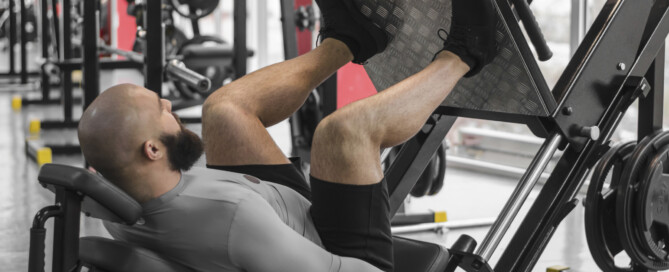
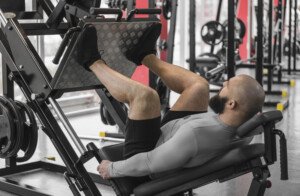


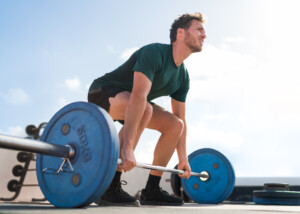









 In practice for 20+ years,
In practice for 20+ years,






































